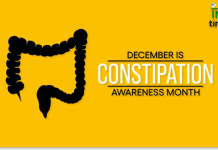
Every year, October 16th marks the celebration of World Spine Day, a global initiative aimed at raising awareness about spinal health and promoting the importance of physical activity, posture, and healthy lifestyles to maintain a healthy spine. As part of the Bone and Joint Decade Action Week, this day draws attention to a crucial part of the body that many people tend to overlook—the spine.
In 2024, World Spine Day takes on even greater significance as the prevalence of back pain, spinal disorders, and musculoskeletal issues continues to rise. From office workers sitting long hours in front of screens to athletes pushing their bodies to the limit, almost everyone faces the risk of spinal issues at some point in life. This article will dive deep into the significance of World Spine Day 2024, its theme, the most common spine-related issues, preventive measures, and how to raise awareness about maintaining a healthy spine.
Understanding the Spine: Its Anatomy and Importance
The spine, also known as the vertebral column or backbone, is a complex structure consisting of 33 individual vertebrae stacked on top of one another. It plays a crucial role in protecting the spinal cord, which transmits signals between the brain and the rest of the body. In addition to providing support and enabling flexibility, the spine is vital for overall mobility and balance.
The spine is divided into five regions:
- Cervical spine: The upper part of the spine located in the neck, consisting of seven vertebrae.
- Thoracic spine: The middle section consisting of twelve vertebrae, which are connected to the ribs.
- Lumbar spine: The lower back, consisting of five larger vertebrae that bear much of the body’s weight.
- Sacrum: A triangular bone made up of five fused vertebrae at the base of the spine.
- Coccyx: Commonly referred to as the tailbone, it consists of four fused vertebrae.
Despite its strength, the spine is susceptible to various conditions and injuries, which can have a significant impact on a person’s quality of life.
The Theme of World Spine Day 2024: “Move for Spine Health”
The theme for World Spine Day 2024 is “Move for Spine Health,” focusing on the vital role that physical activity plays in maintaining a healthy spine. Movement is essential for keeping the spine flexible, strong, and functional, but sedentary lifestyles, poor posture, and insufficient exercise contribute to a growing epidemic of spinal issues. This theme emphasizes the importance of regular physical activity, appropriate exercise routines, and ergonomic awareness to prevent spinal problems.
The Global Impact of Spine Disorders
Spinal conditions, particularly back pain, are a leading cause of disability worldwide. According to the Global Burden of Disease study, low back pain is the leading cause of disability in most countries. It affects people of all ages and is associated with considerable economic costs due to lost productivity, healthcare expenses, and disability payments.
Some common spine-related disorders include:
- Back Pain: A broad term covering a range of symptoms, back pain can occur due to muscle strains, disc degeneration, or spinal abnormalities. It affects a large portion of the population and can become chronic if not managed properly.
- Herniated Disc: A condition in which the soft, gel-like center of a spinal disc pushes through its outer layer, often causing pain, numbness, or weakness in the arms or legs.
- Scoliosis: A sideways curvature of the spine that typically appears during adolescence, scoliosis can range from mild to severe and may require bracing or surgery in extreme cases.
- Sciatica: A type of pain that radiates along the path of the sciatic nerve, which runs from the lower back down to the legs. It is commonly caused by a herniated disc or bone spur compressing the nerve.
- Spinal Stenosis: The narrowing of the spinal canal, which can lead to pressure on the spinal cord and nerves. Symptoms include pain, tingling, and muscle weakness, particularly in the legs.
- Osteoporosis: A condition that weakens bones, making them more prone to fractures. When osteoporosis affects the spine, it can lead to vertebral compression fractures, causing back pain and reduced mobility.
- Degenerative Disc Disease: With age, the intervertebral discs in the spine lose their flexibility, elasticity, and shock-absorbing properties. This can result in chronic pain and decreased spinal mobility.
Why We Need World Spine Day
Given the prevalence of spine-related issues, World Spine Day serves a critical role in spreading awareness about the importance of spine health. By encouraging people to be mindful of their posture, engage in regular physical activity, and adopt ergonomic practices, this day aims to reduce the incidence of spinal problems.
Many people are unaware of how their daily habits affect their spine. Whether it’s slouching while working, lifting heavy objects improperly, or leading a sedentary lifestyle, these actions can place undue stress on the spine. Educating the public about preventive measures is key to minimizing the long-term effects of these habits.
The Importance of Physical Activity for Spine Health
A sedentary lifestyle is one of the biggest contributors to spine problems. People who spend long hours sitting at desks, watching TV, or using mobile devices often develop poor posture, which strains the spine and can lead to chronic pain. The World Spine Day 2024 theme, “Move for Spine Health,” encourages individuals to incorporate movement into their daily lives to maintain spinal flexibility and strength.
Some of the best activities for maintaining spine health include:
- Walking: Walking is a low-impact exercise that promotes healthy blood circulation and strengthens the muscles that support the spine.
- Stretching: Regular stretching can improve flexibility, reduce muscle tension, and prevent stiffness in the spine and surrounding muscles.
- Yoga: Yoga is an excellent way to improve posture, balance, and flexibility while strengthening the core muscles that support the spine.
- Swimming: The buoyancy of water makes swimming a joint-friendly exercise, reducing the pressure on the spine while still providing a full-body workout.
- Strength Training: Building core and back muscles through strength training exercises helps support the spine, reducing the risk of injury.
Ergonomics: Creating a Spine-Friendly Environment
In addition to physical activity, proper ergonomics is essential for preventing spinal problems. Whether you are working in an office, studying, or relaxing at home, the way you position your body can have a significant impact on your spine’s health.
Here are some ergonomic tips to reduce spinal strain:
- Sit with Proper Posture: When sitting, ensure that your back is fully supported by the chair. Keep your feet flat on the ground, and your knees at a 90-degree angle. Avoid slouching or leaning forward.
- Adjust Your Workspace: If you work at a computer, adjust the monitor to eye level to prevent neck strain. Use a chair with lumbar support, and take regular breaks to stand and stretch.
- Use a Supportive Mattress: Your mattress should provide enough support to keep your spine in a neutral position while you sleep. If your mattress is too soft or too firm, it can contribute to back pain.
- Lift Properly: When lifting heavy objects, bend at your knees instead of your waist. Keep the object close to your body, and use your leg muscles to lift, rather than straining your back.
Raising Awareness: How You Can Participate in World Spine Day 2024
Spreading awareness about spinal health is one of the key objectives of World Spine Day. There are several ways individuals, healthcare professionals, and organizations can participate in raising awareness:
- Social Media Campaigns: Share facts, tips, and videos about spinal health on social media platforms. Use hashtags like #WorldSpineDay and #MoveForSpineHealth to join the global conversation.
- Educational Workshops: Organize workshops in schools, workplaces, or community centers to teach people about the importance of posture, ergonomics, and regular exercise for maintaining spine health.
- Health Screenings: Offer free spinal screenings or posture assessments to help people identify potential issues before they become serious problems.
- Exercise Challenges: Encourage people to participate in physical activity challenges, such as walking a certain number of steps per day, practicing yoga, or completing a stretching routine.
- Collaboration with Healthcare Providers: Work with chiropractors, physiotherapists, and orthopedic specialists to host events or share resources on spine care and preventive measures.
Conclusion
World Spine Day 2024 is an important reminder that spine health is integral to our overall well-being. By understanding the common issues that affect the spine, adopting preventive measures, and staying active, we can significantly reduce the risk of spinal problems. The theme of this year, “Move for Spine Health,“ emphasizes the need for physical activity and good posture to keep our spines healthy and functional.
Let’s use this day as an opportunity to educate ourselves and others about the importance of spine health and commit to making lifestyle changes that will benefit our spines in the long run. Through awareness, education, and action, we can reduce the global burden of spine-related disorders and help people lead healthier, pain-free lives.




































toobit exchange
toobit exchange